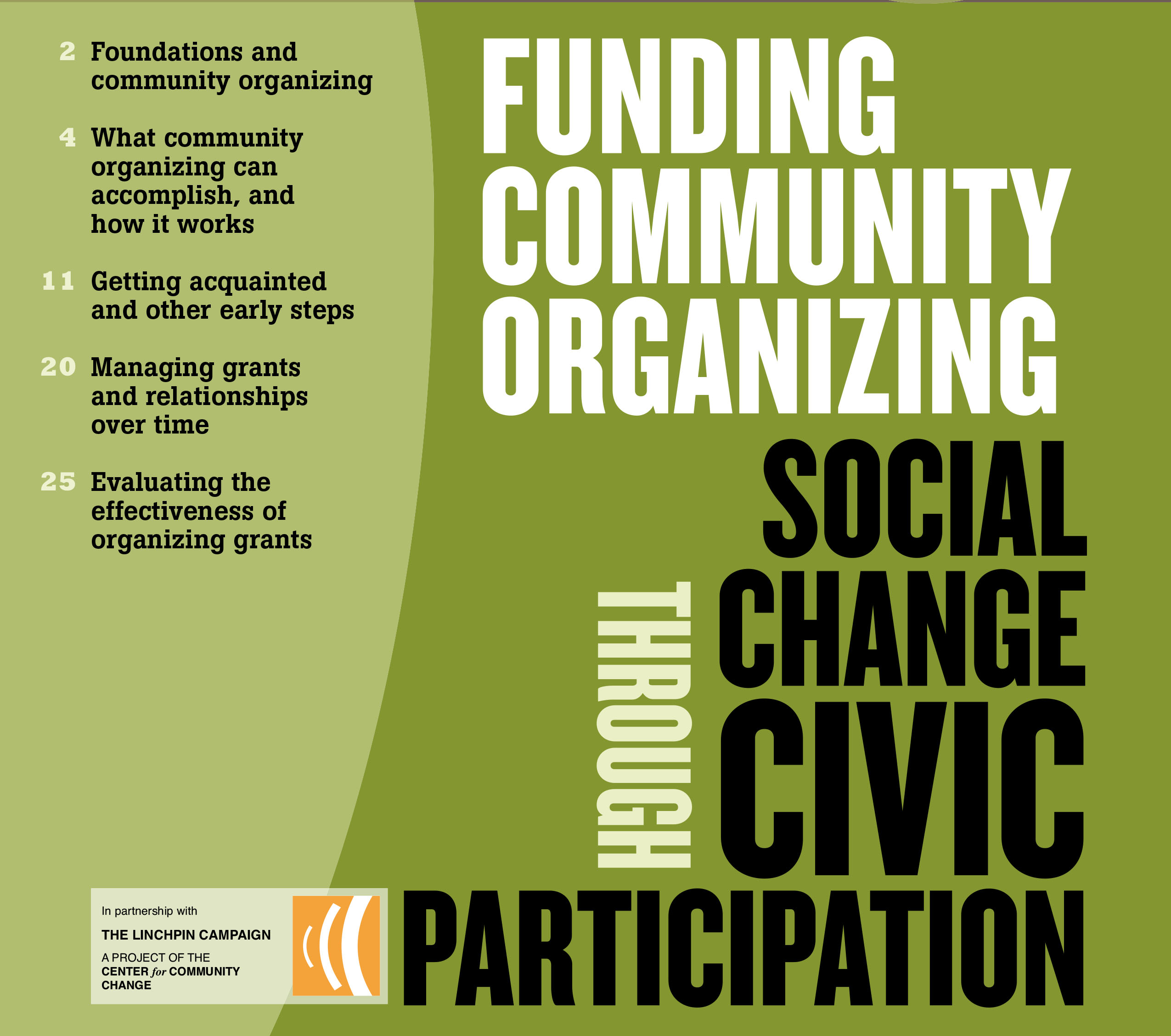Adding Organizing to the Tactical Toolkit A Funder's Approach to Partnering with Community Organizaing Organizations
“We’ve been fairly project-based in the way we crafted our funding,” said a long-time program officer at a statewide health foundation in the West. “We took a broad view of health,” embracing “policy, advocacy and other kinds of systems change, and were fine with multi-year grants, but we made few basic capacity-building grants.” The foundation supported organizing groups, but the groups tended to bring them project proposals, “such as how to navigate families toward health care providers that offer language services.”
“With projects,” she continued, “the grant would end, and the grantee would have to make a decision to either seek additional funders, try to get the same funder to renew, or change projects. . . . We realized that if we wanted to sustain a partnership with community organizing organizations, it would be more helpful to them and, frankly, more helpful to our agenda if we were to think of a different approach.”
That insight enabled the foundation to ask, “What are the priorities of our grantees, and how might they match the priorities of the foundation?” One clear matching priority was universal children’s health coverage, an issue that resonated for the foundation and had surfaced in organizers’ one-on-one meetings across the state. What followed was a five-year partnership in pursuit of children’s coverage. The foundation funds the organizing network for “polling, communications, policy research, as well as community organizing.” The foundation also pays the costs of “a ’kitchen cabinet,’ or steering group, to help guide policy development,” which includes representatives of both advocacy and organizing groups. The organizers have “a lot to say about what will work and what won’t work.”
What have been some of the challenges? Well, there’s the “two steps forward and one step back, or sometimes the one step forward and two steps back nature of policy,” said the funder. But when working with organizing groups, “some of the intermediate outcomes really are about community cohesiveness, leadership, and a sense of being stronger together to work on problems. When you acknowledge those as being part of change, then you’re less dependent on meeting a particular timeline.”



